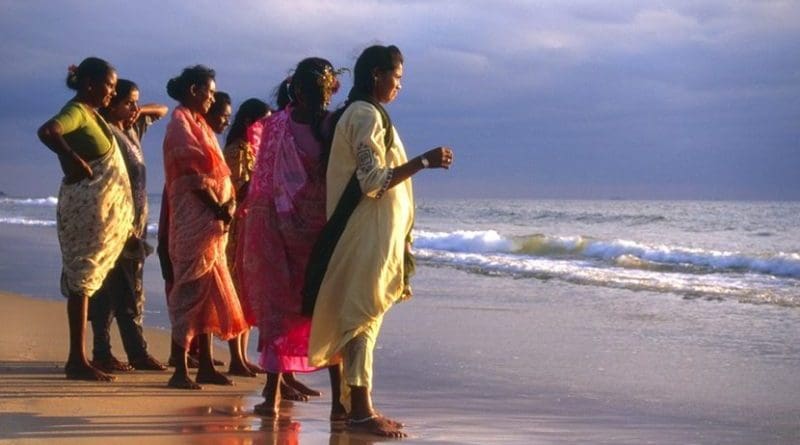The Continued Standards of Gender (In)Equality In India – OpEd
By Oxfam India
By Julie Thukkuden*
Today the World Economic Forum released its 2018 edition of the Global Gender Gap Index Report. The Index measures the gap between women and men in four key areas of health, education, economy and politics to assess the state of gender equality in a country. Technically, it measures women’s disadvantages as compared to men and therefore, it is not strictly a measure of gender equality.
This year too India continues with its low performance on this Index. In 2006, India was able to cover 60 % of its gender gap, dipping 59.3% in 2007 and gradually increasing to 66.4% (in 2012) to 66.9% (in 2017). In 2017, the 108th ranking was a slip of 21 places from the 87th ranking in 2016, where it was able to cover 68.3% of the gender gap – far below the global average and behind its neighbours of China and Bangladesh. This was primarily due to less participation of women in the economy and low wages.
With one of the lowest female labour force participation in the world, India’s growth story has definitely not benefited women. When governments reduce their expenditures on essential public services such as education and healthcare, women and girls are the first ones to lose out on these services (Oxfam Briefing Paper 2016). This increases the burden of women’s unpaid care work, which is not accounted for by the family or the economy. Add to this is the increasing rates of violence against women and girls in both public and private spaces.
When women face violence continuously and in many ways, it sets them back in economic terms. In 2016, the global cost of violence against women was estimated by the UN to be US$1.5 trillion, equivalent to approximately 2% of the global gross domestic product (GDP), or roughly the size of the entire Canadian economy (UN Women, 2016) Studies indicate, for example, that in India women can lose an average of at least five paid work days for each incident of intimate partner violence. In health terms too, violence that women face affects them adversely. A study in 2008 explored the adverse impacts of domestic violence on women and children in India to reveal that women victims of domestic violence experience significantly higher rates of malnutrition as measured by two indicators: being underweight and anemic (Ackerson and Subramanian, 2008). Children of women experiencing domestic violence also experienced high levels of malnourishment (ICRW, 2016)
Though India has an array of progressive laws that deal with violence in its myriad forms, the biggest challenge is their implementation with no dedicated budgets, government officials with additional charges, a cadre of duty bearers who do not know the laws, often do not understand the standard operating procedures and a citizenry working with archaic norms as the basis for perpetuating violence against women and girls.
Even when funds are available, (for example the Nirbhaya Fund dedicated to Jyoti Pandey, whose brutal gang-rape and subsequent death shook the nation in 2012 and led to the allocation of INR 3100 crores for projects that dealt with different forms of violence) the utilisation of the funds towards services that would help women overcome violence is very low.
Existing social norms strongly support the normalisation of violence in all spheres. In the workplace, a law to deal with sexual harassment was passed only in 2013 after a struggle for 17 years. Yet the recent #MeToo movement in India has only opened the doors to the organised workforce to ensure that mechanisms are in place and follow due processes. With the majority of women in the informal sector, the mechanisms for dealing with sexual harassment is not conducive to encouraging women to join the workforce.
With a somewhat lackadaisical response on the part of the government towards reducing the burden of care work for women employees, Indian women have to continue to bear the brunt of major household chores, both in urban and rural areas. OECD data shows that Indian men between the age group of 15-64 years spend 51 minutes in a day on unpaid work whereas women spend 351 minutes in a day on unpaid work.
What needs to be taken on an urgent basis should be the following:
- With the elections round the corner, we must demand that all major parties adhere to a minimum standard of 50% of its candidates being women.
- As citizens, we must make informed choices keeping in mind the proven track record of the candidates, both male and female, with regard to gender justice and equality. Proposed candidates who publicly announce regressive measures should be debarred or at least not voted into power.
- All parties must be held accountable to pass the Women’s Reservation Bill, something that has been agreed to by most major parties but yet, it does not find prominence in being tabled in every Parliament session.
- We must hold accountable the various Ministries for the 30% utilisation of the non-lapsable INR 3100 crores in the Nirbhaya Fund.
- The government must hold periodic evaluations to see the efficacy of the many pro-women laws and ensure that the gaps are addressed in a timely manner.
- Corporate houses must ensure that mechanisms to deal with sexual harassment in the workplace are in place and are being actively used by the staff.
- In the informal sector, there needs to be large-scale awareness building for women workers on the Local Complaints Committee and the processes associated with it.
- Improving the conditions of work for women in the informal sector may require more holistic interventions which would best be arrived at through consultations with women themselves.
*Julie Thukkuden is the gender justice programme lead for Oxfam India. She can be reached at @JulieThekkudan on Twitter.

